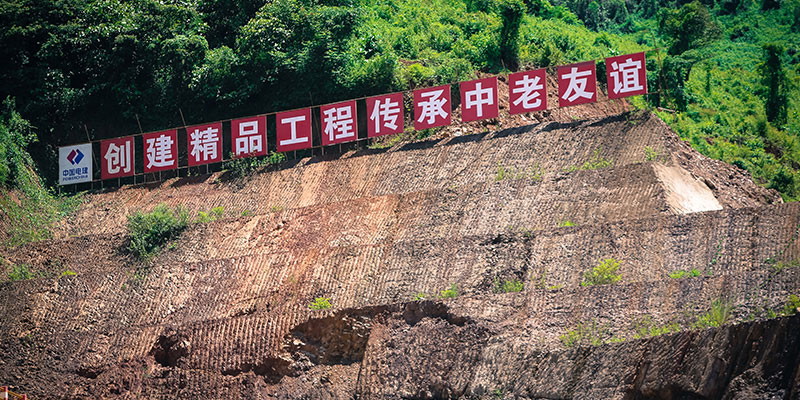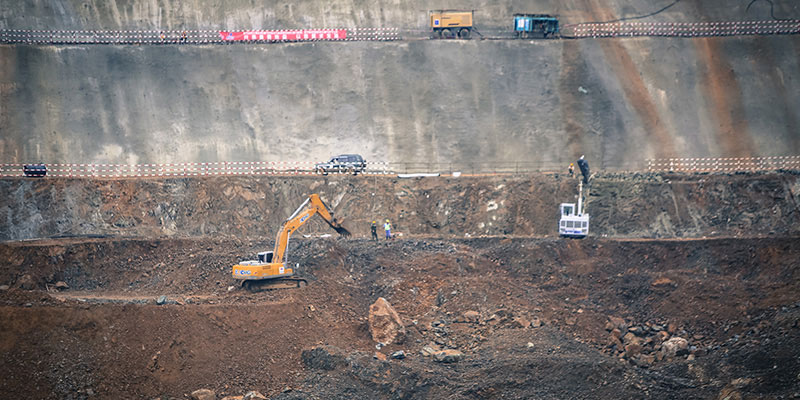Seeking Wealth Through Hydropower
Villagers displaced by dams pay a heavy price in lost ancestral lands.
Location: Laos
I enter Laos from Chiang Khong, Thailand. The last time I crossed the Mekong here it was in a longtail boat. Today I go through a new customs building and cross the Friendship Bridge into Bokeo.
Despite being the smallest and least powerful of all the Mekong nations, Laos plays a pivotal role in the river’s journey. It’s a country with hundreds of rivers, only two of whose waters aren’t captured by the Mekong basin. This wealth of rivers is now supposed to provide hydropower profits.
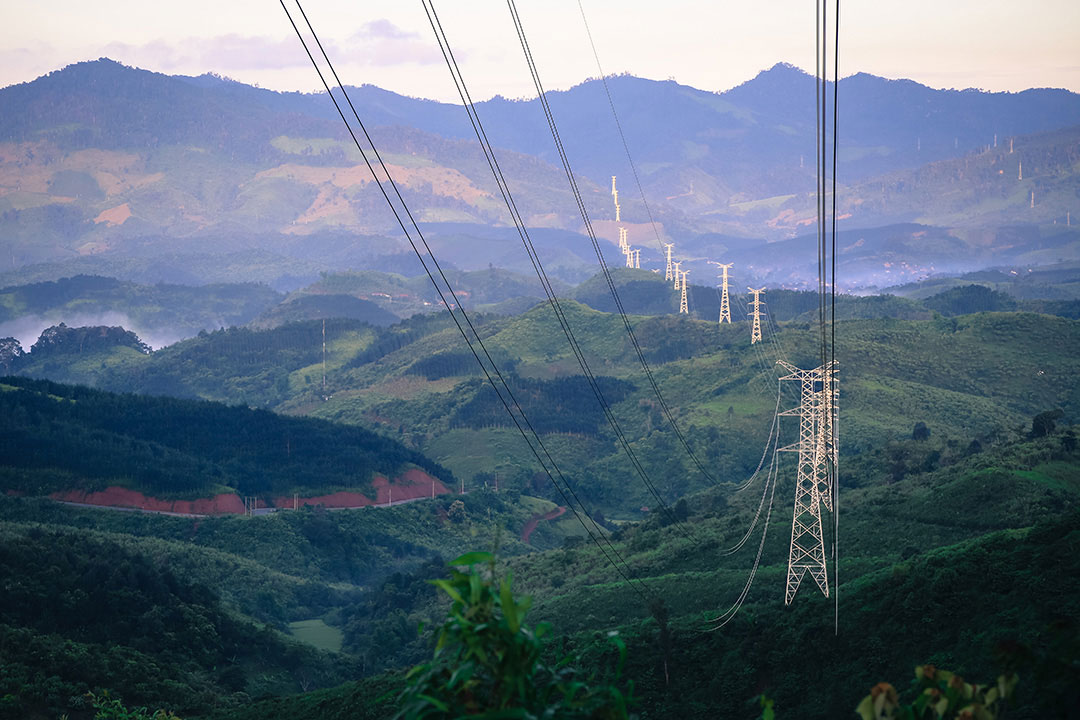
Laos plans to become the “battery of Southeast Asia” by exporting electricity to neighboring countries.
Over breakfast in Bokeo, my fixer and I sketch a rough map, an extravagant geographical sweep of the pen all the way from the north to south of Laos.
We discuss the government’s plans to blast more rapids to make way for more dams and improve navigation. But our driver hasn’t even heard of this. He explains that whatever happens in Laos is up to the government. Sometimes the government doesn’t tell people what’s planned, even when it directly affects them. What the government says, the people must do.
We head northwest and the road climbs steadily for hours through a sheer mountain range where the forest has been shaved to the peaks. The road is narrow, despite which villages are regularly set on the verge. There are many trucks, every one displaying Chinese names. We pass a weigh station where bananas are being shipped to Yunnan.
At sunset, Laotians reclaim the roadside as a town square, with people promenading centimeters from Chinese semitrailers with their horns blaring. Everywhere people glance up as if dimly reminded of a different reality, with a distant economy imposing new and accelerating goals on them.
After twisting over roads cut into mountain sides, we suddenly emerge to the sight of the Nam Ou or Ou River.
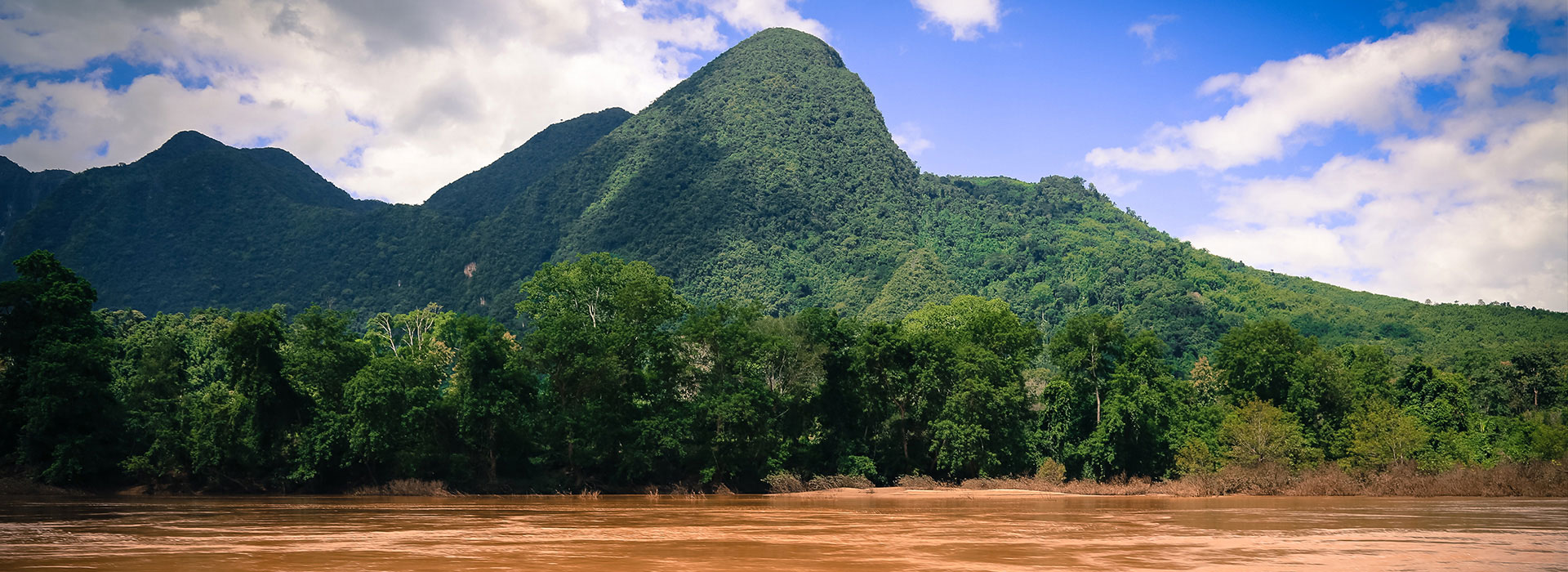
In a small town, Nong Khiaw, which some call a village, we rest at a guesthouse and organize a boat trip to take us to see the Nam Ou 3 dam, now under construction upstream.
A boatman leads us to his vessel, and we cast off and glide like a knife over the translucent green surface, while towering karst mountains provide many-faceted faces. It seems ironic that such a place could be called poor.
Hours later we round a corner and see the signs of construction, open-cut hillside bare to the bedrock, trucks and excavators, and jungle streams flowing into the river via concrete drains.
A Chinese construction company brings workers and a brothel
On a high bridge, bold red signs display Chinese words. Next to the worksite, we’re met by the sound of Chinese pop songs. We see a brothel with young women who came from Luang Prabang. They had heard there’s money to be made here from Chinese workers.
Barely 300 meters downstream, we have lunch with a family who say no one ever informed them about the plans for the dam. The father, with a strong but gentle face, says he thinks that the earthworks are just are a feasibility study. But he says the earthworks destroyed his cassava farm, and the village is in a conflict with the Chinese developers over compensation. The Chinese, he says, drive a hard bargain and want to get the land as cheaply as they can.
His wife boils water over a bamboo fire while her husband crosses his arms and has little to say about the new Chinese village in their midst. The villagers don't go there, but they worry about the young people. Maybe they’ll get drunk or take drugs. They don’t know what to do.
Never before did these families need to worry about their boys getting HIV from a teenage prostitute or a drug habit from a fly-in-fly-out dam worker. Nor did they have to worry when their children walked out the door of their hut. Now they worry that the children will fall into the arms of a much bigger world. And the father’s authority has been diminished in the face of the yet-to-be-built concrete wall of a dam.
He says the Lao government does nothing for the people, but if he complains nothing will change. He can’t protest or the authorities will just laugh and he’ll end up in jail. It isn’t like Thailand here, he says.
The boatman and the villager discuss the other dams already built. They’re afraid that they can’t predict what the consequences will be. Already some of the original species of fish have disappeared. In total the Nam Ou is home to 84 fish species. Many are expected to be lost through the reengineering of their habitats.
Seven dams are planned for the Nam Ou, with four already completed. In all, 89 villages are expected to be displaced.
The Xayaburi Dam changes the river’s flow
“Old men like me will stand here in our homes and fight to find solutions.”
- Mekong Boatsman
The next morning we leave the Nam Ou and head south towards the Xayaburi Dam, the dam that has caused the largest political damage among the lower Mekong nations. Just down from Luang Prabang, the $3.5 billion, 1.3 GW Xayaburi dam is one of nine planned in Laos.
We head for an island below the dam, picking our way through the mud to visit the headman. He tells us that the dam has changed the river’s flow, with water levels fluctuating rapidly up and down.
The boatman adds that the water levels used to be tied to the seasons, and that the villagers could use traditions and cultural know-how to catch fish. Now the dam has blocked the seasonal pulse, and the villagers cannot read the signals.
The headman says benefits for them are hard to find. He understands that the dam has been built to develop the country, but on the other hand it’s the locals here who pay the price.
“Old men like me will stand here in our homes and fight to find solutions, he says. “But the young are moving away. They’ll find new lives elsewhere.”
We fly to the capital city of Vientiane and then drive southeast into the Nakai Plateau, where the Nam Theun 2 dam is located. When we visited this dam seven years ago, it was touted as the blueprint for human development through hydropower.
The Nam Theun 2 Dam displaces villagers
Arriving on a newly surfaced road we snake past valleys filled with drowned forests. Passing through a makeshift checkpoint where villagers check for smuggled wildlife and precious wood, we arrive in a well-ordered town on the shores of a manmade lake.
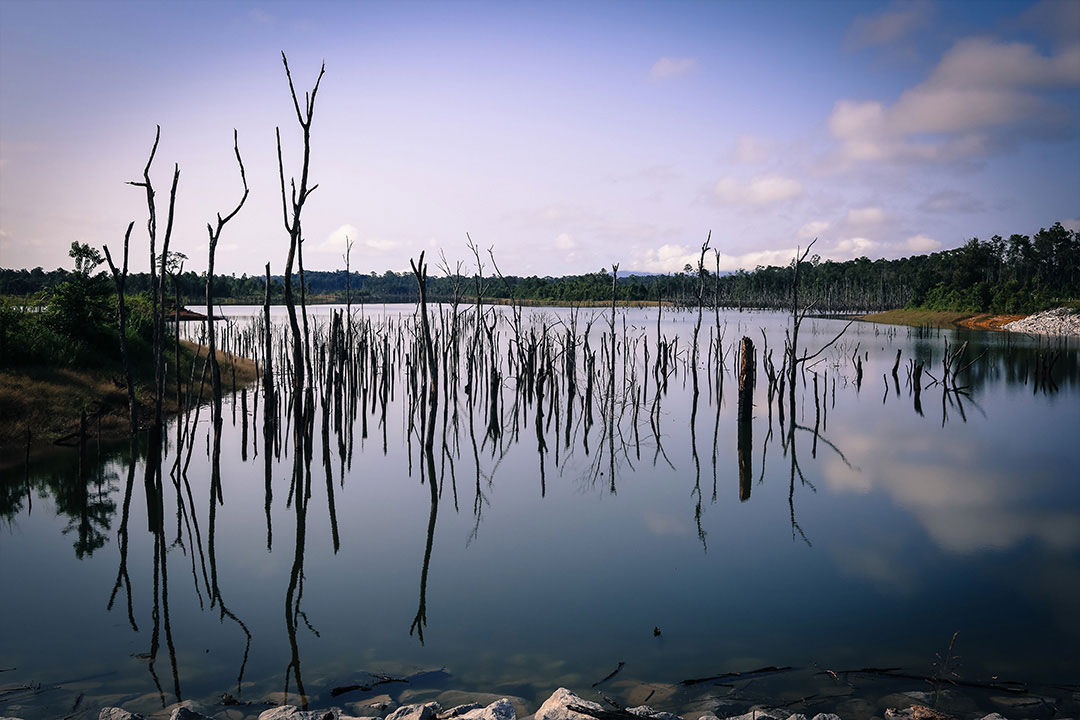
Speaking with a husband and wife and his father, we discover that six villages were relocated and amalgamated into this one community. The woman says that life in the new village is better. They have a school and electricity, a water supply, nice roads, and a health center. But they don’t have enough money, and work is hard to find. Before, they could find food in the forest or on their farm and had no need for money.
In the relocation the government allocated each household a 20-by-30-meter plot of land, far less than they need for farming. Instead people raise chickens, pigs, and cows, and they fish. But there’s always a shortfall, and outsiders from Vientiane come in to fish. This leads to overfishing, and overfishing means that catches have been dropping steadily for years.
The result is that in this one well-resourced community, people are regularly not getting enough to eat. In this new economy, soldiers, teachers, police, and government officials are doing well, but the villagers have yet to find a place.
The old man says that the old village had rice paddies. Now they have none. Before, they could grow crops or find forest resources to take to market for an income. Now they have lost those businesses. They have no education and no way of engaging with the new cash economy that is flowing all around them.
Poverty reduction fails
The government says that dams are being built to lift people from poverty, but in reality the dams that have already been built haven’t alleviated the impoverishment of local communities. Instead the people around the dams lose the resources of their ancestors while power is streamed over their heads. But the villagers dare complain only to themselves.
We turn south and head towards the Cambodian border and the renowned “4,000 Islands” area. As we arrive early in the morning at the dramatic end of the Mekong’s journey through Laos, the Khone Falls are in flood. Unlike the last time when I was here, the rocks and pools are consumed by an entire river squeezed through a narrow channel. It's deafening and terrifying to be near.
I have come to try and meet a fisherman who was our guide last time and find out about the controversial project to build a dam in the middle of one of the most beautiful places on earth.
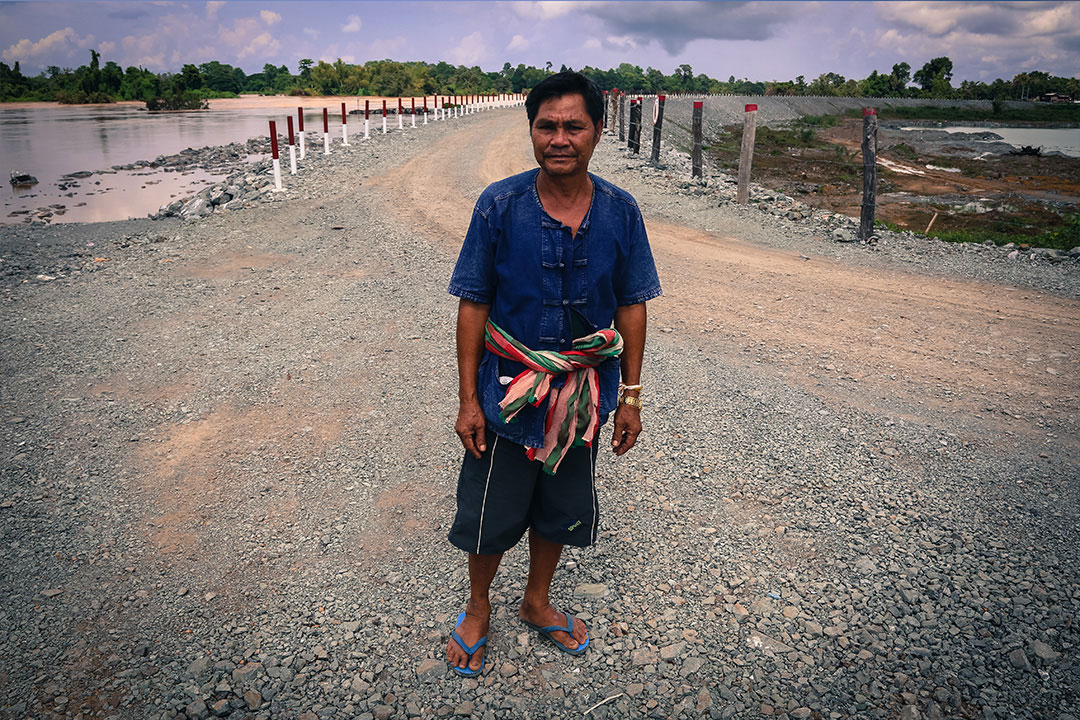
A security guard says that the dam is already under construction. But again he repeats the mantra that the people can’t say anything about the dam. It’s up to the government. “If you speak out, nothing changes,” he says. “There’s no point, so no one says anything.”
He tells us the water has been blocked and drained from the channel to make room for the construction. And when he saw it dry, he says, he was amazed.
He also tells us the government has banned the traditional traps and fish ramps. The old channel was a key migration route, deep and without major drops for the fish. Now the fish are blocked.
In the drained channel bed, men are busy excavating and drilling in order to deepen the channel for the dam to come.
In an area which once embraced the best fishing grounds, the government is supporting the villagers’ transition to farming, using irrigation from paddy fields. But the transition to farming has not gone as planned. The villagers have tried but failed to make it work.
We can see Cambodia from a barrage of broken rapids that stops the Mekong’s waters.
“If you speak out, nothing changes.”
- Dam Security Guard
The villagers have been moved perhaps a mile away, have been given compensation, and have settled in good houses in a small community.
But we speak with a few women who worry about making a living now that the fish are gone. More optimistic, the oldest among them says, “I miss our village, but we can make it work anywhere.”
By 2025, hydropower will be Laos’ main revenue. For a poor country with no other major resources, dams offer a chance to create wealth from the river that is perhaps its greatest asset. But in a secretive and oppressive state, these massive projects burden local communities with a price.
I’m now within shouting distance of Cambodia, where I’ll next discover more of the consequences of these upstream changes.
